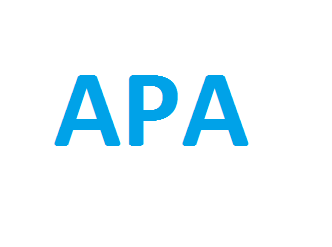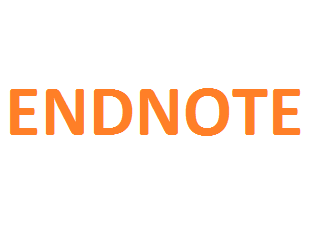
The Academic Perspective Procedia publishes Academic Platform symposiums papers as three volumes in a year. DOI number is given to all of our papers.
Publisher : Academic Perspective
Journal DOI : 10.33793/acperpro
Journal eISSN : 2667-5862
Büyük Dil Modelleri ile Otomatik Gereksinim Analizi
Abstract
Gereksinim analizi, yazılım geliştirme süreçlerinde kritik bir aşamadır ve yetenek açığı ve yapısal dokümantasyon eksikliği gibi zorluklarla karşı karşıyadır. Çevik yöntemlerin benimsenmesiyle birlikte, bu zorluklar daha da önemli hale gelmiştir çünkü çevik yöntemler, hızlı geri bildirim döngüleri ve değişebilen gereksinimler ile uyumlu hale gelmeyi gerektirir. Bu çalışmada, var olan bir büyük dil modeli, gereksinim mühendisliği alanına özelleştirilmiş ve başarıyla uygulanmıştır. Model, doğal dil işleme teknikleri ve büyük dil modeli mimarisi kullanarak, gereksinimlerin olgunlaştırılmasını, analizini ve dokümantasyonunu sistematik hale getirmeyi amaçlamaktadır. Yapılan ilk testlerde, gereksinim analiz süreçlerinin hızlandığı ve gereksinim içerik kalitesinin arttığı gözlemlenmiştir. Elde edilen bulgular, büyük dil modeli tabanlı çözümlerin gereksinim analizi süreçlerini daha verimli hale getirme potansiyeline sahip olduğunu göstermektedir. Bu çalışma, gereksinim analizi süreçlerinde verimliliği artıran yeni bir yaklaşım sunmuştur; gelecekte daha geniş ölçekli uygulamalarla metodolojinin etkinliği daha kapsamlı bir şekilde değerlendirilecektir.
References
[1] Wiegers KE, Beatty J. Software requirements. 3rd ed. Pearson Education; 2013.
[2] Curcio K, Navarro T, Malucelli A, Reinehr S. Requirements engineering: A systematic mapping study in agile software development. J Syst Softw. 2018;139:32–50.
[3] Garousi V, Coşkunçay A, Betin-Can A, Demirörs O. A survey of software engineering practices in Turkey. J Syst Softw. 2015;108:148–77.
[4] Beck K, Beedle M, Van Bennekum A, Cockburn A, Cunningham W, Fowler M, et al. The agile manifesto. 2001 Feb. Available from:
https://www.agilealliance.org/wp-content/uploads/2019/09/agile-manifesto-download-2019.pdf
[5] Sandahl K, Regnell B, Borg M. The magazine at 40: Viewing requirements engineering through a ruby lens. IEEE Softw. 2024;41(6):17–22.
[6] Arora C, Grundy J, Abdelrazek M. Advancing requirements engineering through generative AI: Assessing the role of LLMs. In: Generative AI for Effective Software Development. Cham: Springer Nature Switzerland; 2024. p. 129–48.
[7] OpenAI. Introducing GPTs [Internet]. Available from: https://openai.com/index/introducing-gpts/
[8] Wei B. Requirements are all you need: From requirements to code with LLMs. arXiv preprint arXiv:2406.10101. 2024.
[9] Yeow JSN, Rana ME, Majid NAA. An automated model of software requirement engineering using GPT-3.5. 2024 ASU International Conference in Emerging Technologies for Sustainability and Intelligent Systems (ICETSIS); 2024 Jan. p. 1746–55. IEEE.
[10] Oswal JU, Kanakia HT, Suktel D. Transforming software requirements into user stories with GPT-3.5: An AI-powered approach. 2024 2nd International Conference on Intelligent Data Communication Technologies and Internet of Things (IDCIoT); 2024 Jan. p. 913–20. IEEE.
[11] Marques N, Silva RR, Bernardino J. Using ChatGPT in software requirements engineering: A comprehensive review. Future Internet. 2024;16(6):180.
[12] Abrahão S, Staron M, Gay G, Penzenstadler B, Honnenahalli C. Emerging trends in requirements engineering and testing. IEEE Softw. 2024;41(6):126–9.
[13] Vogelsang A. From specifications to prompts: On the future of generative large language models in requirements engineering. IEEE Softw. 2024;41(5):9–13.
[14] Wingie Enuygun Group. Wingie Enuygun Group. LinkedIn. Erişim tarihi: 4 Ocak 2025. Erişim adresi: https://tr.linkedin.com/company/wingieenuygungroup.
[15] Parthasarathy VB, Zafar A, Khan A, Shahid A. The ultimate guide to fine-tuning LLMs from basics to breakthroughs: An exhaustive review of technologies, research, best practices, applied research challenges and opportunities. arXiv preprint arXiv:2408.13296; 2024.
[16] Wikipedia. ChatGPT. Wikipedia, The Free Encyclopedia. Erişim tarihi: 27 Şubat 2025. Erişim adresi: https://en.wikipedia.org/wiki/ChatGPT.
[17] Jacobson I, Cockburn A. Use cases are essential: Use cases provide a proven method to capture and explain the requirements of a system in a concise and easily understood format. Queue. 2023;21(5):66–86.
[18] Cockburn A, Cockburn L. Writing effective use cases. Pearson Education India; 2008.
[19] Bagriyanik S, Karahoca A. Automated COSMIC function point measurement using a requirements engineering ontology. Inf Softw Technol. 2016;72:189–203.
[20] Mallidi RK, Sharma M. Study on agile story point estimation techniques and challenges. Int. J. Comput. Appl. 2021 Jan 13;174(13):9-14.
[21] Joshi A, Kale S, Chandel S, Pal DK. Likert scale: Explored and explained. Br J Appl Sci Technol. 2015;7(4):396.
[22] Atlassian. Jira [İnternet]. [erişim tarihi 26 Aralık 2024]. Erişim adresi: https://www.atlassian.com/software/jira





